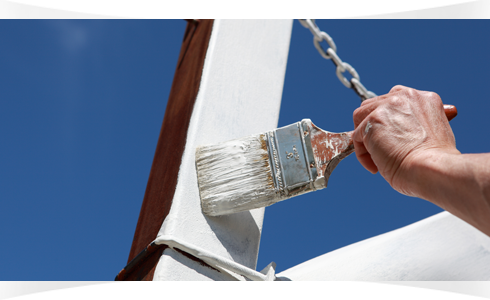



A major factor in concrete decay is carbonation, caused by Carbon Dioxide (CO2) in the atmosphere reducing the alkalinity of concrete. This in turn results in reinforcing steel becoming susceptible to attack by waterand oxygen, causing corrosion of the steel and eventually spalling of the concrete. Sulphates from vehicle exhausts and chlorides from de-icing salts also contribute to concrete degradation.
Anti carbonation coating is one such solution that protects concretes in the building from pollutants and harsh weather. The main objective of exterior paint is not just to decorate but also to protect the concrete structure.
Anti carbonation coatings are used to improve the life of concrete structures like flyovers, bridges, roads etc. It makes the structure or building waterproof and provides it with the ability to resist even wind driven rain. Additionally, it also helps protect the architectural coatings against chloride penetration and allows water vapor diffusion.
The coatings also do the job of making the buildings carbonation resistant and attain high UV resistant qualities while making it look attractive. The coating features microporous structure that acts as a barrier to the ingress of chlorides and carbon dioxide and other acid gases while allowing the passage of water vapor from the concrete structure.
The elastomeric nature of the coating ensures good crack bridging properties, in case of structural movement and also protects the existing concrete from water, carbon dioxide, sulphur dioxide, oxides of nitrogen, chlorides, sulphates and other pollutants. Apart from the concrete, protection of steel, which is encased in the concrete, is also equally important as it is the backbone of any structure.